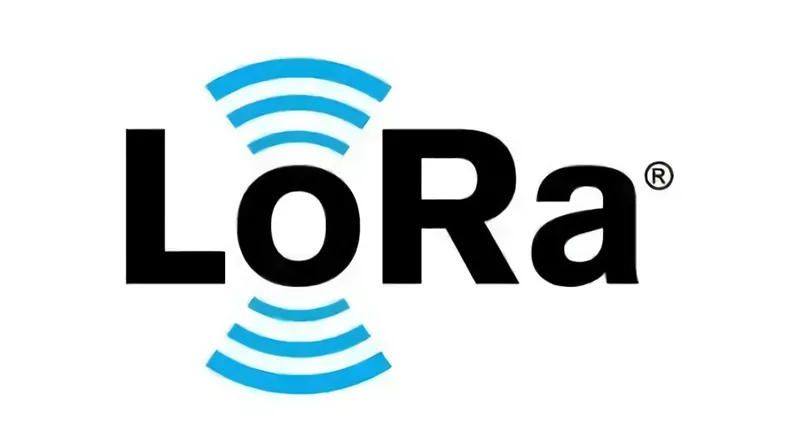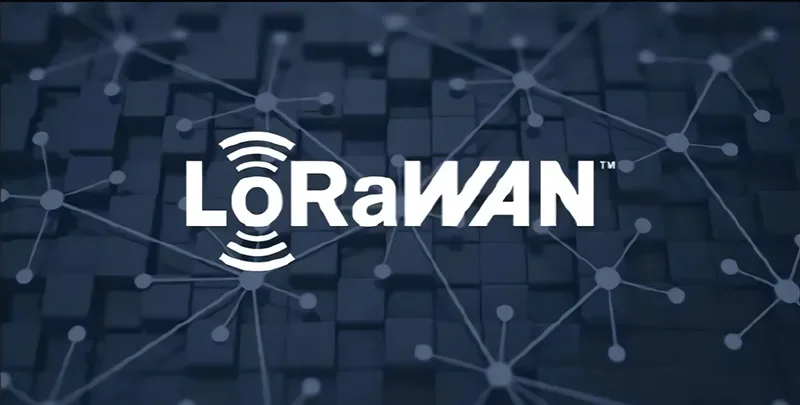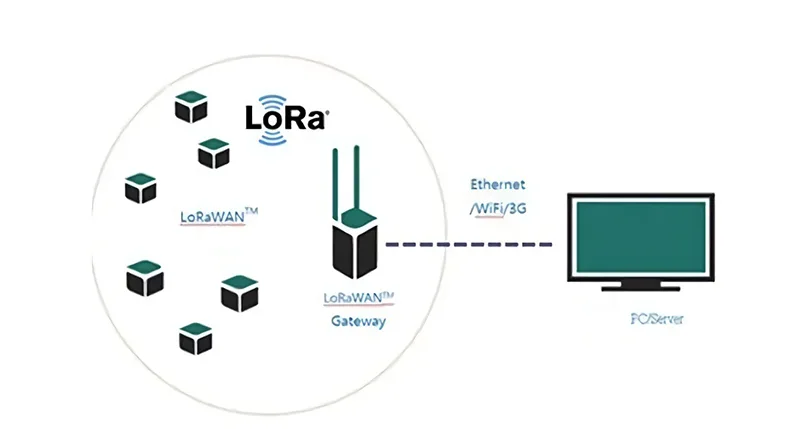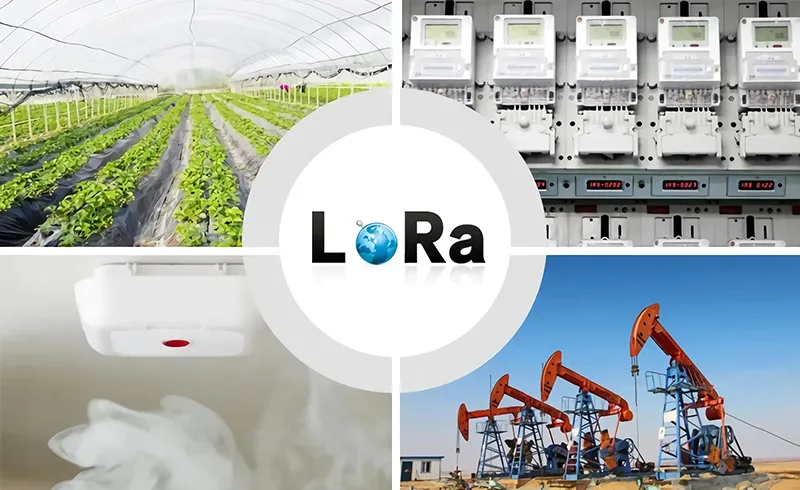This article will tell you what is LoRa technology and LoRaWAN Applications. LoRa is a type of low-power wireless LAN standard. The lower the speed, the longer the transmission distance. Low power consumption is typically challenging to cover a distance since average distance power consumption is high. The most significant characteristic is that LoRaWAN under the condition of the same power consumption as other wireless spread farther; realizes the unity of the low power consumption and long distance and transmission rate is typically a few hundred to a few Kbps.
1. What is LoRa?

LoRa is a physical layer wireless encoding technique used to establish long-distance communication links. It is a member of the CCS (linear modulation spread spectrum technology) family and operates in the sub-1 GHz band. LoRa provides the advantages of robust anti-interference and considerably improves communication distance compared to conventional FSK and other techniques while keeping low power consumption. Furthermore, the diffusion factors regulated by LoRa are virtually orthogonal. This implies that signals concurrently sent to the same frequency band and modulated using various propagation factors do not collide with one another. Instead, the signs from different propagation parameters are little more than background noise.
Spread spectrum modulation, sometimes called Chirp modulation, is the basis for LoRa technology, which is Semtech’s solely owned intellectual property. This kind of technology, known as spread spectrum, trades sensitivity for bandwidth. Wi-Fi and ZigBee use spread spectrum technology and other systems; however, LoRa modulation is distinguished by attaining Shannon’s theorem’s limit and maximum enhancing sensitivity. At the same transmission rate, LoRa technology is 8–12dBm more sensitive than conventional FSK technology.
2. What is LoRaWAN?

This is an open standard that creates media access control (MAC) at the data link layer and communication protocols based on LoRa chips for LPWAN technology. The LoRa Consortium is in charge of maintaining this protocol.
The LoRaWAN gateway transfers messages containing LoRa modulated RF data from the end device to the LoRaWAN network server.
The relationship between terminal devices and gateways is not one-to-one. All gateways are capable of receiving the terminal device’s uplink packets. On the other hand, several gateways in the same region may serve the same terminal device.
Wi-Fi or network cables may be used to link the LoRaWAN gateway to the network server.
The only function of the LoRaWAN gateway, which runs only at the physical layer, is to relay LoRa RF packets. It will carry out physical layer calibration after receiving the LoRa signal. If accurate, it will transmit specific data (timestamp, RSSI, SNR, etc.) through the uplink to the network server. The network server immediately passes the transmission request for the downlink.
3. What are the LoRaWAN Applications

Going back to our actual situation, which is based on LoRa characteristics, we list the five LoRa application possibilities as follows:
- Farm and animal location monitoring: tasks like irrigation equipment tracking and management are best handled by LoRa self-built networks because most of these applications are in remote or rural locations with poor cellular coverage and a high density of IoT devices.
- Oil retrieval and recovery procedures: This region is essentially uninhabited, far away, and destitute of people, and there is no cell network coverage, particularly in the areas with safety requirements like coal mines. Lora easily meets the conditions.
- Monitoring forest fires: Because cellular network base stations must be installed in sparsely inhabited regions, they are expensive to set up and need a fiber access network. In contrast, LoRa networks are inexpensive to set up, have extensive coverage, and are easy to implement.
- Environmental surveillance: There are several types of environmental monitoring locations. Some are for convenience, while others are on rivers, cliffs, and mountains. Given the specific distribution of these environmental monitoring sensors, a LoRa network will be more practical to use.
2. Strict power and range application requirements
- Water and gas meters: These typically have an operational lifespan of 8 to 10 years. Water meters, for example, have a battery that must be changed throughout its lifetime while using very little power. LoRa is hence ideal for this application situation.
- Parking sensor/lock: When the geomagnetic sensor is installed after the earth has been buried, changing the sensor’s battery might be challenging. After the dirt is buried, replacing the battery is costly and needs a lot of energy. Nowadays, LoRa technology is used by the majority of parking sensors.
- Access control, smoke detection, and garbage tracking: These applications call for light sensors and tiny batteries, but because the batteries must last for two to three years before needing replacement and because this application requires an extended operating distance, LoRa technology is appropriate.
- Smart wear: LoRa technology is the best option since smart wear demands significant power consumption, particularly for specific outdoor remote applications.
3. Private and business networks
- Industrial control and production line monitoring: Regular consumers place a high value on production control and production data management, most of which will employ private or enterprise-level IoT. Intelligent industrial applications benefit significantly from LoRa’s flexible deployment and robust anti-interference properties (RF interference characteristics of manufacturing lines).
- Park and property management: Many commercial real estate and residential communities have improved their internal management and amenity services, and they desire to have a private network that they can control. The top few Chinese real estate companies already use LoRa coverage networks to carry out precise control of their commercial and residential real estate.
4. What can you do with LoRa network?

In the previous three years, at least one IoT-based assault has been seen by nearly 20% of enterprises. In 2021, the total cost of IoT security will be $3.1 billion.
A low-power wide-area networking protocol called LoRaWAN is created to wirelessly link battery-powered “things” in local, national, or international networks to the Internet. Security is a crucial component of the LoRaWAN network technology. For instance, its basic authentication and security structure is based on Annex B[IEEE802154] of IEEE802.15.4/2006’s implementation of the AES128 encryption technique. In comparison to single-key solutions, LoRaWAN is more secure since it uses separate keys for encrypting and authenticating user data and maintaining network integrity.
Tracing the global supply chain
Many companies with international markets rely on fleets of vehicles, including trucks, automobiles, ships, and airplanes. Businesses may get the data they need to make wise cost-saving choices using IoT fleet monitoring. Route planning, geo-vehicle tracking, and predictive maintenance updates from embedded sensors may help with effective fuel management by allowing planned maintenance and minimizing downtime. Because of its low energy consumption and long battery life, embedded sensors may be installed in the whole fleet in less than a day and are easy to maintain.
Smart agriculture
Only 3% of the water on earth can be accessed as fresh water, and the agriculture sector uses 70% of it. IoT solutions are essential for giving farmers the knowledge they need to decide how to utilize the resources at their disposal efficiently. Farmers may lower the risk of crop mortality due to overirrigation or dryness using a LoRa-based deployment with smart irrigation.
Smart home
There are several details that an owner must keep track of—temperature, lighting, water use, etc. IoT technologies may make managing utilities easier in the age of connectivity, making them readily available to owners no matter where they are on the network. Applications for smart homes that use LoRa include thermostats, sprinklers, doors, locks, and power outlets. LoRa-based thermostats can check a home’s temperature and make adjustments as necessary throughout the day, just as smart refrigerators can. Applications for smart irrigation may keep track of when and how long sprinkler systems should be on. The capacity to manage numerous utilities and save energy is made available to homeowners and property managers via these programs, which are all easily accessible from mobile devices.





















